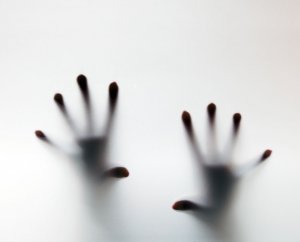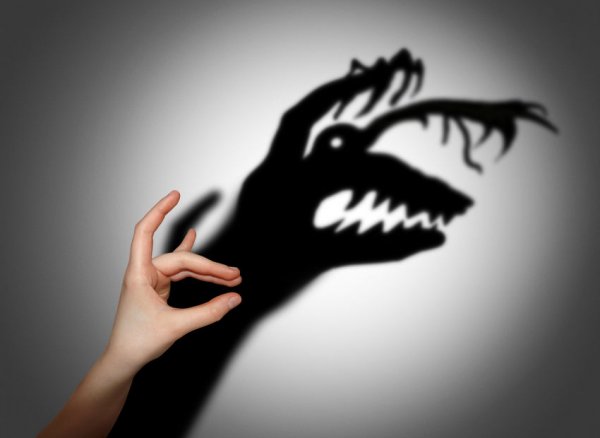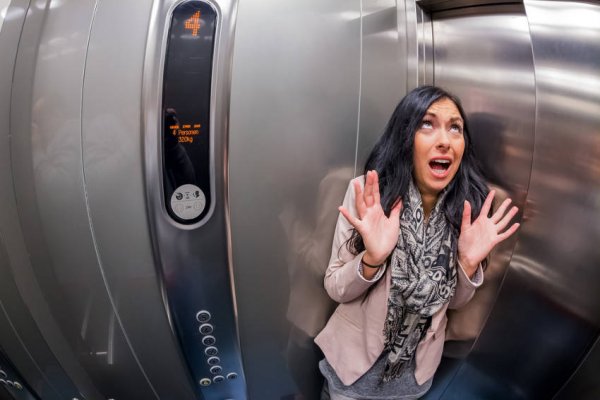How to Control the Symptoms of Panic Attacks

A panic attack is a sudden feeling of intense pain or emotional discomfort that causes so much anxiety that the person suffering the attack fears that he or she is losing control, that the feeling will never go away, and even that it will potentially kill them. In reality, these attacks are not life-threatening.
Panic attacks can happen without any warning and can even wake a person up when they are in a deep sleep. They can last any amount of time, but they usually last between 10 and 20 minutes. If you have ever gone through this, you already know it is not a pleasant experience.
It is estimated that 30% of people have suffered a panic attack or will suffer a panic attack at some point in their lives. It is also estimated that it is most likely to happen between the ages of 15 and 19. Of those cases of panic attacks, less than 3% will advance and turn into a panic disorder.
Below, we will find out how to control panic attacks. However, before doing so, it is interesting and important to analyze and understand what exactly these attacks are, and what are their specific symptoms.
Symptoms of panic attacks
Someone having a panic attack will experience at least four of the following symptoms:
- Rapid pulse, and even tachycardia
- Sweating
- Spasms
- Difficulty breathing
- A sensation of drowning or suffocation
- Chest pains
- Nausea
- Feeling faint and dizzy
- Feelings of unreality or feeling separated from the body
- A prickling, tingling sensation, or numbness
- Chills or hot flashes
- Fear of going crazy
- Fear of dying
There is no pattern with panic attacks. Some people may experience several panic attacks in just one day, and then spend months without one, while other people may go through an attack of this type once a week.
Panic attacks may actually be caused by other health conditions, so it is important that any person who experiences these symptoms be evaluated by a professional to determine if there is an underlying cause.
Certain heart problems, respiratory illnesses, hormonal irregularities, or stimulants like caffeine, can all cause similar symptoms to those of a panic attack.

Why is panic produced?
A panic attack happens when something triggers fear, or the system of fight or flight. The body’s nervous system releases the hormone adrenaline, and this wave of adrenaline can cause disturbing feelings and sensations.
When the nervous system reacts normally to a frightening situation, adrenaline levels quickly adapt, and will drop back down to normal levels once the situation passes.
In a panic attack, this does not happen, and it may take a while for the body to recuperate completely from the symptoms it experiences during a panic attack.
Usually, there is no clear reason why these symptoms arise. The brain may try to explain or justify the feeling with irrational thoughts such as: “I should be dying” or “I am losing my mind.” A panic attack can also be provoked by a stressful situation, such as flying on an airplane or speaking in public.
The part of the brain called the amygdala is directly involved in panic attacks and anxiety disorders. This cerebral structure has a high-tension reaction when exposed to an unknown situation or after being confronted with an extremely stressful event.
The actual cause of panic attacks has not yet been scientifically proven, but research indicates that a combination of genetic, biological, psychological, and environmental factors can make a person more prone to feeling panic.

Controlling the symptoms of a panic attack
After the appropriate medical and psychological exams have been conducted and can rule out any underlying disorder, symptoms of panic attacks can be controlled in various ways:
Knowledge
Knowledge is essential for controlling the symptoms of panic attacks. Learning how fear works in the brain can help people to recognize a panic attack for what it is: an ignition error in the amygdala that sets off a wave of adrenaline.
It is crucial to understand that these symptoms are not associated with a serious illness. No matter how terrible they may be, it helps to remember that a panic attack will not cause death.
Breathe calmly
Our natural instinct is to start breathing more and more rapidly when panic invades our bodies. Taking control of our breath is the first step in controlling a panic attack.
The objective is to allow a slow current of air to enter and exit, avoiding hyperventilation and excess intake of carbon dioxide.
In order to be able to do this, breathe slowly in through the nose and exhale through the mouth with slightly pursed lips, holding in the breath and keeping it in the lungs for a few seconds. After several cycles, it will become easier and the breath will become calm.
Muscular Relaxation
Another useful strategy consists of learning how to relax the body. One way is to tense various muscles and then relax them. This can help to reduce tension in general and to lower stress levels.
A good place to start is in the feet. Contract the muscle group while inhaling deeply. Hold the breath for a few seconds and then let it go, while relaxing your muscles at the same time.
Full attention
Full attention, known as mindfulness, is a form of living in the present and accepting thoughts as they come, but without our thoughts absorb us.
During a panic attack we process thoughts in a way that lead them to spiral towards worrying about catastrophic events, so focusing on letting go of thoughts is a helpful technique.
Exercise
Regular exercise is necessary in maintaining good health and should be part of everyone’s daily lives. Exercise can help relieve stress and supports the body in producing natural chemical substances (endorphins) that are vital to pain relief and a general feeling of well-being.
Plan ahead
If you know that certain situations incite fear, or make you remember past situations in which you felt fear or panic, breath calmly and try to relax. Another option is to look for distractions and try to not think about your panic. Furthermore, if you know that this may happen, prepare yourself for it.
For example, wear layers of clothing so you can take them off bit by bit to relieve that heavy feeling if you get really hot, or look for a way to cool the environment you’ll be entering.
Another option is to always have water on hand to stay hydrated. Drinking water will also calm you for a simple reason: the brain receives the message that there is no danger, because if there were, you would not be standing there drinking water.
Eat well
Regularly eating well helps to maintain normal levels of blood sugar. In order to do that, never go more than four hours without eating. In addition, you should make up for any possible nutritional deficiencies in your diet, and avoid caffeine and alcohol, considering that these substances can unleash or worsen panic attacks.
A panic attack is a sudden feeling of intense pain or emotional discomfort that causes so much anxiety that the person suffering the attack fears that he or she is losing control, that the feeling will never go away, and even that it will potentially kill them. In reality, these attacks are not life-threatening.
Panic attacks can happen without any warning and can even wake a person up when they are in a deep sleep. They can last any amount of time, but they usually last between 10 and 20 minutes. If you have ever gone through this, you already know it is not a pleasant experience.
It is estimated that 30% of people have suffered a panic attack or will suffer a panic attack at some point in their lives. It is also estimated that it is most likely to happen between the ages of 15 and 19. Of those cases of panic attacks, less than 3% will advance and turn into a panic disorder.
Below, we will find out how to control panic attacks. However, before doing so, it is interesting and important to analyze and understand what exactly these attacks are, and what are their specific symptoms.
Symptoms of panic attacks
Someone having a panic attack will experience at least four of the following symptoms:
- Rapid pulse, and even tachycardia
- Sweating
- Spasms
- Difficulty breathing
- A sensation of drowning or suffocation
- Chest pains
- Nausea
- Feeling faint and dizzy
- Feelings of unreality or feeling separated from the body
- A prickling, tingling sensation, or numbness
- Chills or hot flashes
- Fear of going crazy
- Fear of dying
There is no pattern with panic attacks. Some people may experience several panic attacks in just one day, and then spend months without one, while other people may go through an attack of this type once a week.
Panic attacks may actually be caused by other health conditions, so it is important that any person who experiences these symptoms be evaluated by a professional to determine if there is an underlying cause.
Certain heart problems, respiratory illnesses, hormonal irregularities, or stimulants like caffeine, can all cause similar symptoms to those of a panic attack.

Why is panic produced?
A panic attack happens when something triggers fear, or the system of fight or flight. The body’s nervous system releases the hormone adrenaline, and this wave of adrenaline can cause disturbing feelings and sensations.
When the nervous system reacts normally to a frightening situation, adrenaline levels quickly adapt, and will drop back down to normal levels once the situation passes.
In a panic attack, this does not happen, and it may take a while for the body to recuperate completely from the symptoms it experiences during a panic attack.
Usually, there is no clear reason why these symptoms arise. The brain may try to explain or justify the feeling with irrational thoughts such as: “I should be dying” or “I am losing my mind.” A panic attack can also be provoked by a stressful situation, such as flying on an airplane or speaking in public.
The part of the brain called the amygdala is directly involved in panic attacks and anxiety disorders. This cerebral structure has a high-tension reaction when exposed to an unknown situation or after being confronted with an extremely stressful event.
The actual cause of panic attacks has not yet been scientifically proven, but research indicates that a combination of genetic, biological, psychological, and environmental factors can make a person more prone to feeling panic.

Controlling the symptoms of a panic attack
After the appropriate medical and psychological exams have been conducted and can rule out any underlying disorder, symptoms of panic attacks can be controlled in various ways:
Knowledge
Knowledge is essential for controlling the symptoms of panic attacks. Learning how fear works in the brain can help people to recognize a panic attack for what it is: an ignition error in the amygdala that sets off a wave of adrenaline.
It is crucial to understand that these symptoms are not associated with a serious illness. No matter how terrible they may be, it helps to remember that a panic attack will not cause death.
Breathe calmly
Our natural instinct is to start breathing more and more rapidly when panic invades our bodies. Taking control of our breath is the first step in controlling a panic attack.
The objective is to allow a slow current of air to enter and exit, avoiding hyperventilation and excess intake of carbon dioxide.
In order to be able to do this, breathe slowly in through the nose and exhale through the mouth with slightly pursed lips, holding in the breath and keeping it in the lungs for a few seconds. After several cycles, it will become easier and the breath will become calm.
Muscular Relaxation
Another useful strategy consists of learning how to relax the body. One way is to tense various muscles and then relax them. This can help to reduce tension in general and to lower stress levels.
A good place to start is in the feet. Contract the muscle group while inhaling deeply. Hold the breath for a few seconds and then let it go, while relaxing your muscles at the same time.
Full attention
Full attention, known as mindfulness, is a form of living in the present and accepting thoughts as they come, but without our thoughts absorb us.
During a panic attack we process thoughts in a way that lead them to spiral towards worrying about catastrophic events, so focusing on letting go of thoughts is a helpful technique.
Exercise
Regular exercise is necessary in maintaining good health and should be part of everyone’s daily lives. Exercise can help relieve stress and supports the body in producing natural chemical substances (endorphins) that are vital to pain relief and a general feeling of well-being.
Plan ahead
If you know that certain situations incite fear, or make you remember past situations in which you felt fear or panic, breath calmly and try to relax. Another option is to look for distractions and try to not think about your panic. Furthermore, if you know that this may happen, prepare yourself for it.
For example, wear layers of clothing so you can take them off bit by bit to relieve that heavy feeling if you get really hot, or look for a way to cool the environment you’ll be entering.
Another option is to always have water on hand to stay hydrated. Drinking water will also calm you for a simple reason: the brain receives the message that there is no danger, because if there were, you would not be standing there drinking water.
Eat well
Regularly eating well helps to maintain normal levels of blood sugar. In order to do that, never go more than four hours without eating. In addition, you should make up for any possible nutritional deficiencies in your diet, and avoid caffeine and alcohol, considering that these substances can unleash or worsen panic attacks.
This text is provided for informational purposes only and does not replace consultation with a professional. If in doubt, consult your specialist.







